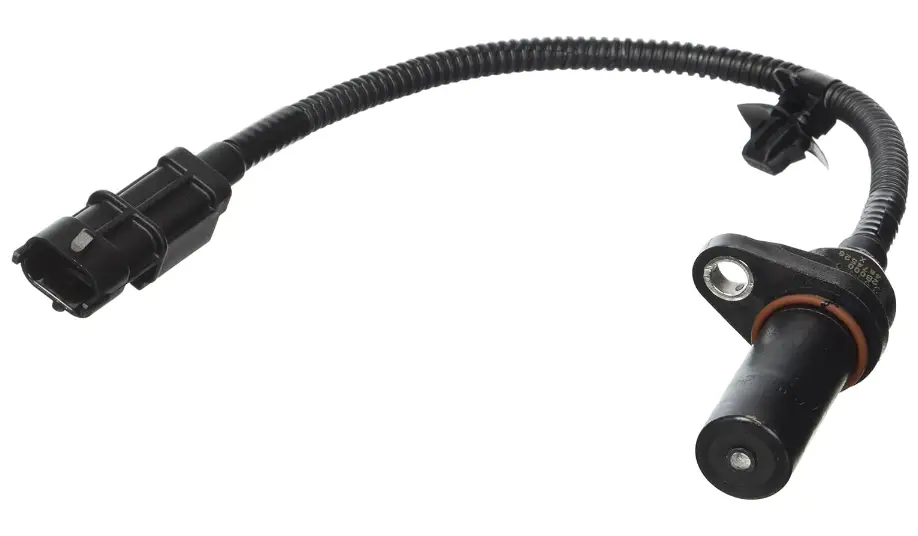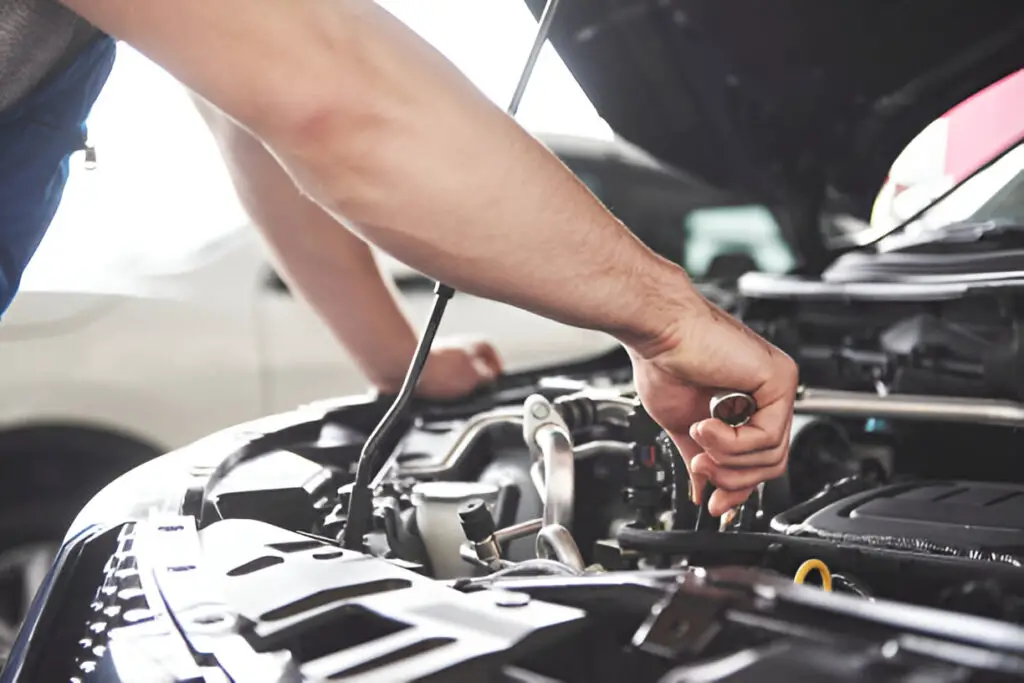Yes, a faulty crankshaft sensor can cause a car to stall. The sensor provides critical data to the engine control unit (ECU) for managing fuel injection and ignition timing. When it fails, the ECU may not receive accurate information, leading to engine misfires or stalling, especially during idling or acceleration.
The crankshaft sensor, also known as the crankshaft position sensor (CKP), plays a pivotal role in the engine’s operation by monitoring the position and speed of the crankshaft. This data is essential for the engine control unit (ECU) to manage fuel injection, ignition timing, and other critical functions. When this sensor malfunctions, one of the most alarming symptoms is engine stalling.
Contents
Role of the Crankshaft Sensor in Engine Operation
To fully grasp why a malfunctioning crankshaft sensor can cause engine stalling, it’s important to understand its function within the engine. The crankshaft sensor monitors the position and rotational speed of the crankshaft as it spins. This information is transmitted to the ECU, which uses it to control various engine functions, including:
- Fuel Injection Timing: Ensuring fuel is injected at the precise moment for optimal combustion.
- Ignition Timing: Controlling when the spark plug fires to ignite the air-fuel mixture.
- Engine Synchronization: Coordinating the timing of the camshaft and crankshaft to maintain smooth engine operation.
Without accurate data from the crankshaft sensor, the ECU cannot properly manage these critical processes, leading to issues such as misfires, rough idling, and, most notably, engine stalling.

How a Faulty Crankshaft Sensor Causes Stalling
Engine stalling occurs when the engine suddenly shuts off while running. This can happen at idle, during acceleration, or even while cruising. A failing crankshaft sensor can cause stalling in several ways:
Loss of Signal: The most direct cause of stalling is a complete loss of the sensor signal to the ECU. If the sensor stops sending data, the ECU is left without the information it needs to regulate fuel injection and ignition timing. As a result, the engine can stall unexpectedly.
Intermittent Signal: Sometimes, the crankshaft sensor may produce an intermittent or erratic signal. This can cause the ECU to miscalculate the crankshaft position, leading to incorrect timing for fuel injection and spark plug firing. These timing errors can cause the engine to misfire or stall.
Delayed Response: A sensor that is slow to respond can create a lag in the ECU’s processing of engine data. This delay can result in improper timing adjustments, causing the engine to stall, especially when coming to a stop or accelerating.
Impact on Idle Control: At idle, the engine requires precise control over fuel and air mixture. A faulty crankshaft sensor can disrupt this balance, leading to stalling when the vehicle is idling or slowing down.
Symptoms of Crankshaft Sensor-Induced Stalling
While engine stalling is a primary symptom of a bad crankshaft sensor, several other signs often accompany it. Recognizing these symptoms can help in diagnosing the issue:
Check Engine Light: A malfunctioning crankshaft sensor often triggers the check engine light. A diagnostic scan will typically reveal trouble codes like P0335, indicating a problem with the crankshaft position sensor circuit.
Engine Misfires: If the sensor is not providing accurate data, the ECU may misfire one or more cylinders, leading to a rough-running engine, reduced power, and stalling.
Difficulty Starting the Engine: A bad crankshaft sensor can cause issues with starting the engine, especially when the engine is cold. In some cases, the engine may crank but not start at all.
Reduced Fuel Efficiency: Incorrect timing caused by a faulty crankshaft sensor can lead to inefficient combustion, reducing fuel economy and causing the engine to work harder than necessary.
Poor Acceleration: If the sensor is not functioning correctly, the engine may struggle to accelerate smoothly, leading to jerky or hesitant acceleration, which can also result in stalling.
How to Fix Crankshaft Sensor Stalling Issue
If you suspect that your vehicle’s stalling issue is due to a faulty crankshaft sensor, it’s crucial to diagnose and address the problem promptly to avoid further damage or unsafe driving conditions.
OBD-II Diagnostic Scan: The first step in diagnosing a crankshaft sensor issue is to perform an OBD-II scan. This will retrieve any stored trouble codes that can indicate sensor malfunction. Codes such as P0335 or P0336 specifically point to crankshaft sensor problems.
Visual Inspection: Inspect the sensor and its wiring for any visible damage, such as frayed wires, corrosion, or oil contamination. The sensor is typically located near the engine block, close to the crankshaft pulley.
Testing the Sensor: A multimeter can be used to test the sensor’s resistance and voltage output. The readings should be compared to the manufacturer’s specifications. A significant deviation indicates that the sensor is faulty and needs to be replaced.
Replacing the Sensor: If the sensor is found to be faulty, replacement is usually straightforward. After replacing the sensor, clear any trouble codes and perform a test drive to ensure the problem is resolved.
Checking Related Components: Since the crankshaft sensor works in tandem with other engine components, it’s wise to inspect related parts such as the camshaft position sensor, wiring harnesses, and the ECU to ensure no other issues contribute to the stalling problem.

Prevent Crankshaft Sensor Failures and Stalling
While crankshaft sensor failures can sometimes be unpredictable, there are preventive measures that can help reduce the likelihood of failure and subsequent stalling:
Regular Maintenance: Regular vehicle maintenance, including timely oil changes and inspections, can help prevent oil leaks and debris buildup that could damage the crankshaft sensor.
Protecting Electrical Components: Ensuring that wiring harnesses are secure and protected from engine heat and vibrations can prevent electrical issues that could lead to sensor failure.
Addressing Issues Promptly: If you notice symptoms such as rough idling, poor acceleration, or the check engine light, it’s essential to address these issues immediately to prevent further damage.
Keeping the Engine Clean: Regularly cleaning the engine bay can help prevent the buildup of dirt and debris that could affect the sensor’s performance.
Frequently Asked Questions
Here are some FAQs about the crankshaft sensor –
1. Can a faulty crankshaft sensor cause intermittent stalling?
Yes, a faulty crankshaft sensor can cause intermittent stalling, especially if the sensor’s signal to the ECU is sporadic or erratic.
2. How much does it typically cost to replace a crankshaft sensor?
The cost of replacing a crankshaft sensor can vary, typically ranging from $150 to $250, including parts and labor. Prices may vary depending on the vehicle make and model.
3. Will disconnecting the crankshaft sensor cause the engine to stall?
Yes, disconnecting the crankshaft sensor will cause the engine to stall or prevent it from starting, as the ECU relies on the sensor’s data to manage engine timing.
4. Can I drive my car with a bad crankshaft sensor?
Driving with a bad crankshaft sensor is not recommended, as it can lead to stalling, misfires, and poor engine performance, which can be unsafe.
5. How long can a crankshaft sensor last before it needs replacement?
A crankshaft sensor can last anywhere from 100,000 to 150,000 miles, but its lifespan can be shortened by factors like extreme heat, oil leaks, or electrical issues. Regular maintenance can help extend its life.
Conclusion
A malfunctioning crankshaft sensor can indeed cause a car to stall, as it plays a crucial role in managing the engine’s timing and overall operation. Stalling can occur due to a loss of signal, erratic readings, or delayed sensor response, all of which disrupt the ECU’s ability to control the engine properly. Recognizing the symptoms of a failing crankshaft sensor and taking prompt action to diagnose and fix the issue is essential for maintaining your vehicle’s performance and safety.